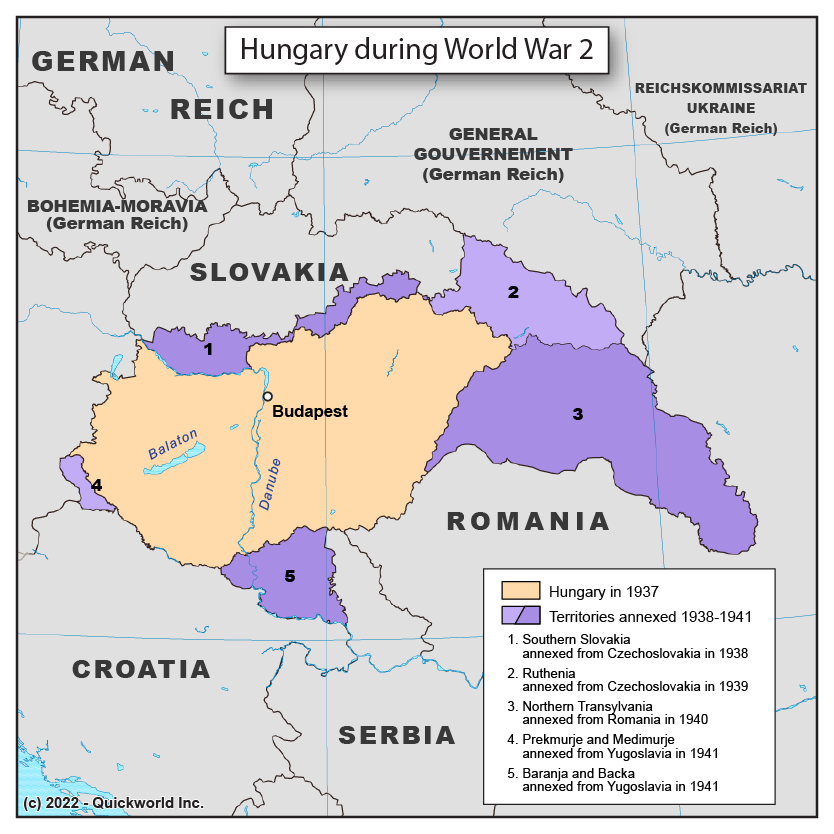Our World War II Series focuses on the territorial changes of Hungary during that war.
Hungary's territory had been highly reduced in the Trianon Treaty of 1920, losing land to all its neighbours. Over a third of ethnic Hungarians ended up in the new nation states that surrounded it and their minority rights were not guaranteed in a time of great nationalist pride and economic uncertainty.
This led the Hungarians to rely on the leadership of Admiral Horty, a former leader of the Austro-Hungarian Navy, who enjoyed great prestige and was trusted to politically regain lost territories. The ascent of Nazi Germany would prove to be beneficial at first. Eager to be viewed as a peaceful but dominant partner, Hitler awarded Czechoslovak territories to Hungary as part of the First Vienna award in late 1938. This was followed by more Slovak lands after the dismantlement of Czechoslovakia in 1939. Then, in 1940, a Second Vienna Award gave Hungary a third of the Transylvanian lands they had lost to Romania. Interestingly, because by that time Nazi Germany called all the shots in Central Europe, neither Romania nor Slovakia fought for the lands they lost, far too aware of the consequences of standing up to the Imperialist nation.
The German invasion of Yugoslavia in 1941 gave Hungary another opportunity to reclaim disputed lands in Serbia, Croatia and Slovenia. But the turn of the War after Stalingrad showed the rise of a new imperialist power to the East, and the eventual victory of the USSR proved another territorial disaster for Hungary: all gains that took place were nullified once again, at the same time that all other German allies lost a lot: Ruthenia, Bukovina and Bessarabia were annexed by the USSR while Hungary, Chechoslovakia and Romania came under the domination of the USSR, which would last until 1990.
Hungary in WW2


